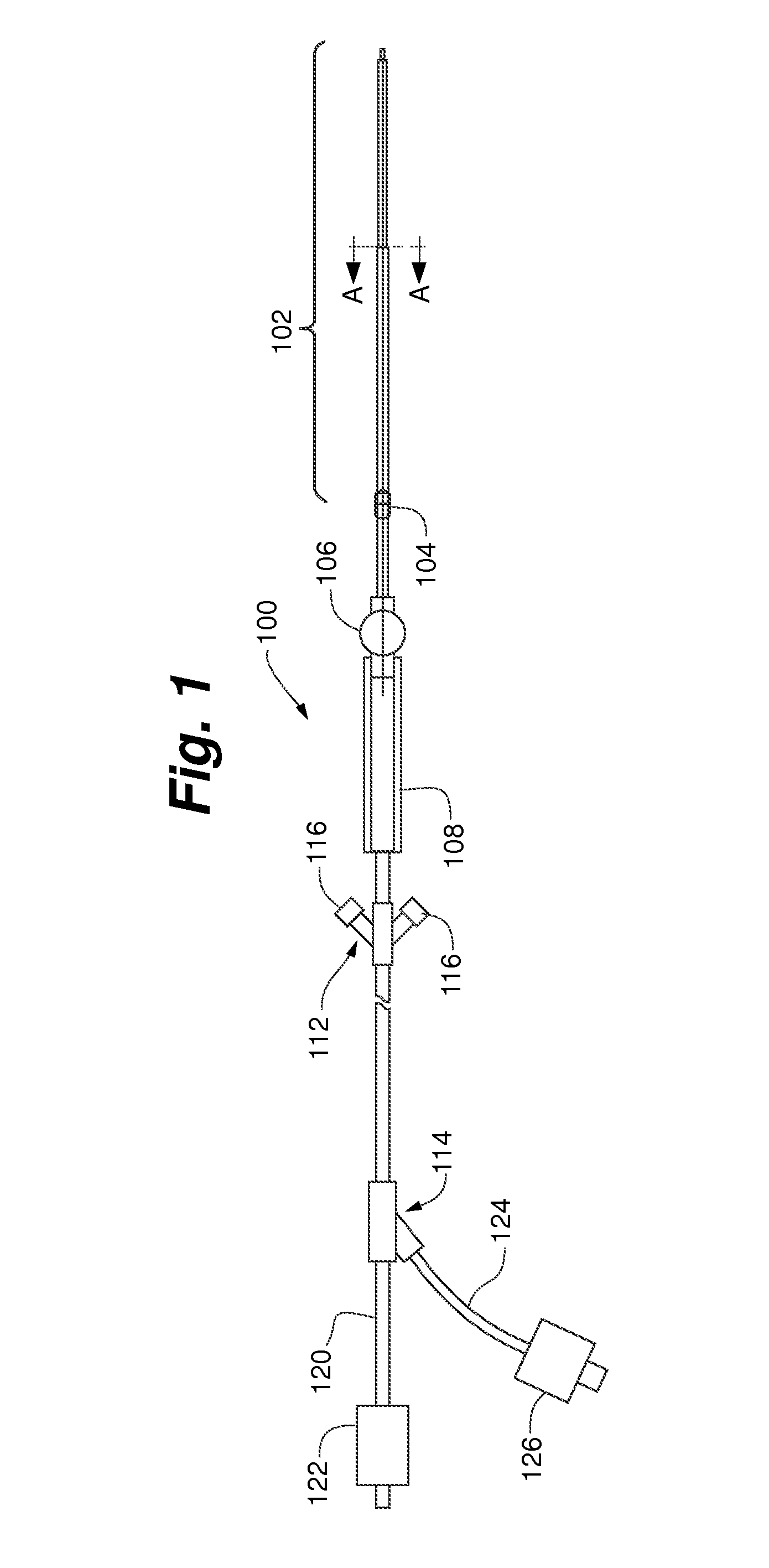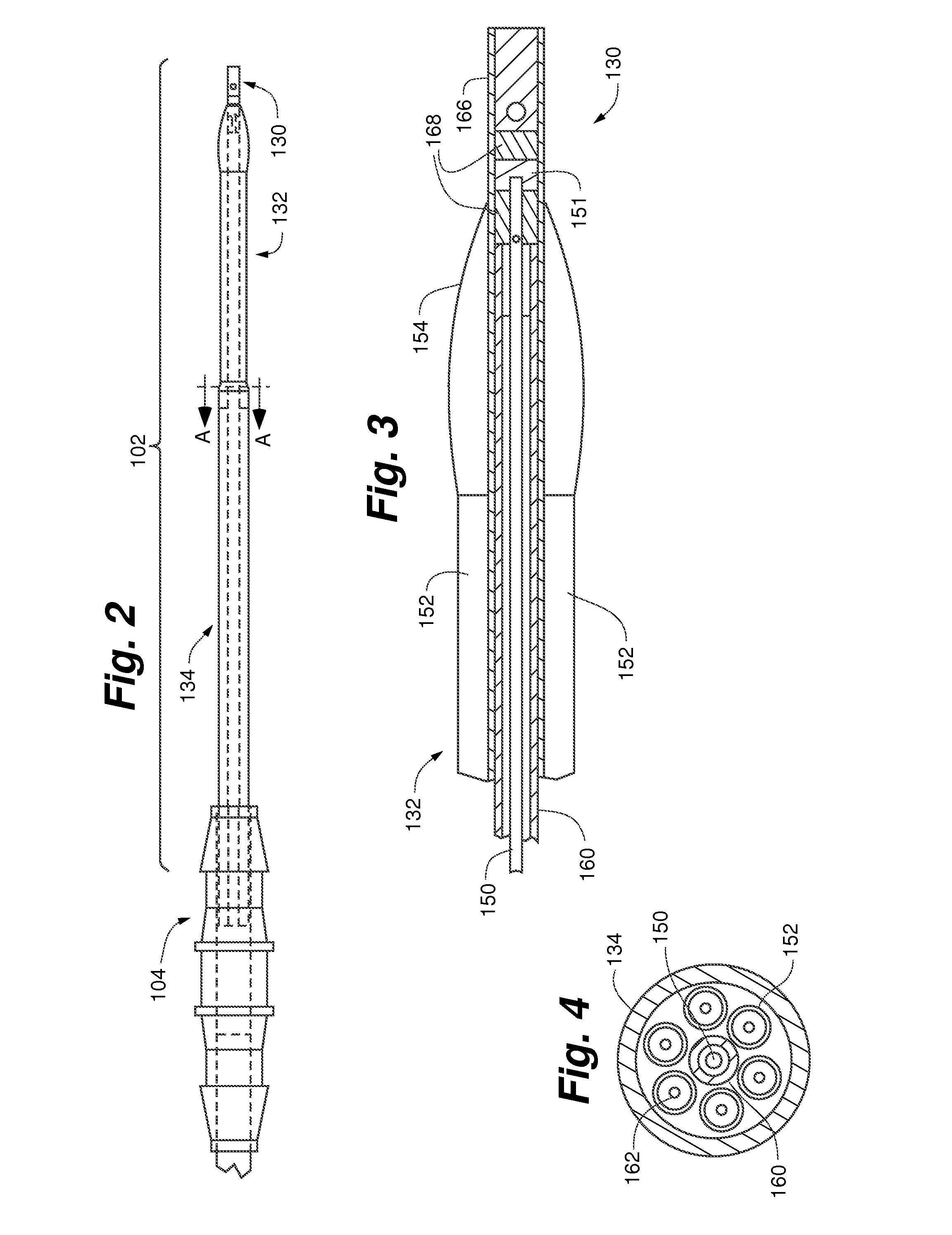System and method for treating compartment syndrome
a compartment syndrome and systemic technology, applied in the field of catheters, can solve the problems of compartment syndrome ischemia, difficult diagnosis of compartment syndrome, inability to distinguish between clinical symptoms and other symptoms,
- Summary
- Abstract
- Description
- Claims
- Application Information
AI Technical Summary
Benefits of technology
Problems solved by technology
Method used
Image
Examples
Embodiment Construction
[0037]An apparatus of the present invention can change the standard of care for military orthopedic injuries, since it can provide potential preventive and therapeutic benefits of a compartment monitoring device in the treatment of soldiers having extremity injuries and either exhibiting or at risk for developing compartment syndrome.
[0038]The terms “fluid” and “non-fluid” tissues, as used in this context, will generally refer, respectively, to the difference between tissue that is intended and able to be take up by, or into, an apparatus of this invention, in order to be measured, removed, etc., at or by the functional device tip, as compared to tissue(s) that instead have the tendency or risk of impinging upon or occluding such an apparatus, to the point where a functional device tip can not be used for its intended purpose.
[0039]In a preferred embodiment, the apparatus comprises one or more sensors within a catheter portion of the apparatus, for use in determining one or more cor...
PUM
 Login to View More
Login to View More Abstract
Description
Claims
Application Information
 Login to View More
Login to View More - R&D
- Intellectual Property
- Life Sciences
- Materials
- Tech Scout
- Unparalleled Data Quality
- Higher Quality Content
- 60% Fewer Hallucinations
Browse by: Latest US Patents, China's latest patents, Technical Efficacy Thesaurus, Application Domain, Technology Topic, Popular Technical Reports.
© 2025 PatSnap. All rights reserved.Legal|Privacy policy|Modern Slavery Act Transparency Statement|Sitemap|About US| Contact US: help@patsnap.com



